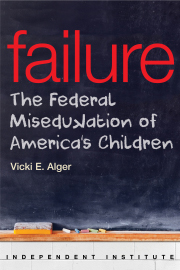Just in time for National School Choice Week, a new national poll finds that support for school choice has increased to more to two-thirds of Americans. Hopefully, lawmakers are listening.
The American Federation for Children’s Fifth Annual School Choice Survey polled 1,200 likely 2020 voters and found 67 percent of respondents support the concept of school choice, including 40 percent who “strongly” support it.
The survey was conducted by Beck Research, a respected Democratic polling firm whose previous clients include the National Education Association, the country’s largest teachers union, a staunch opponent of school choice.
The survey results show strong and growing support for school choice across the political spectrum, including: Democrats, 56 percent, up two percentage points from last year; Independents, 69 percent, a seven percentage-point increase from last year; and Republicans, 80 percent, up 5 percentage points compared to last year. Fully 68 percent of white Americans support school choice, compared to 61 percent last year. Support among minorities even higher among African-Americans, 67 percent, and higher still among Latinos, 73 percent, a one percentage-point increase each compared to last year.
Generationally, millennials are the strongest school-choice supporters, 75 percent. Not far behind are parents and grandparents, including ones of public-school students, who favor school choice by a 3-to-1 margin.
What’s more, the survey findings help shatter some prevailing myths about school choice support among targeted constituencies. For example, it is commonly assumed that school choice isn’t needed or wanted beyond inner-city areas, where the “really bad” schools are. Not so.
Strong and growing majorities of likely voters support school choice regardless of their locale, including respondents living in areas that are designated: large metro, 66 percent, a remarkable 10 percentage-point increase over last year; small metro, 69 percent, a solid seven percentage-point increase; rural, 68 percent, up one percentage-point from last year; and suburban, 64 percent, which is unchanged from last year.
These results suggest that school choice isn’t just an escape hatch out of truly bad schools. It’s a pathway into schools that are better fits for students based on their unique individual needs.
Perhaps that’s why growing majorities of parents favor school choice. Fully 72 percent of parents overall support it, up from 64 percent last year, and 69 percent of public-school parents now favor school choice, compared to 63 percent last year
And what types of school choice do Americans favor most? A variety of private and public options garner strong support that has increased across the board between two five percentage-points compared to last year, including: special-needs scholarships, 86 percent; scholarships for military dependents, 79 percent; education savings accounts, 78 percent; public charter schools, 74 percent; tax-credit scholarships, 68 percent; and virtual or online learning, 60 percent.
Not only do most American voters favor school choice, three out of five are more likely to vote for elected officials who support expanding education options.
Commenting on the survey findings, John Schilling, president of the American Federation for Children, observes, “Despite relentless attacks from opponents of educational freedom throughout the past year, school choice support has grown... Most parents want a different option for their child and are willing to make sacrifices to go to a better school if they had the option. Republicans, Democrats, Independents, and communities of color are all demanding greater choice in K-12 education. It’s time for policymakers to listen to these voters and pass legislation that gives more families the freedom to choose the best educational environment for their child.”
Like the American Federation for Children national survey, a recent nationally representative survey conducted by EdChoice also finds Americans overwhelmingly support educational choice program, including: educational savings accounts, 74 percent; tax-credit scholarships, 66 percent; and public charter schools, 61 percent.
Education systems that largely ration options based on where a child’s parents can afford to live is a relic of a bygone era. Parents want, and their children deserve, educational options that are as unique as they are. National School Choice Week celebrates those options and should inspire policymakers from coast to coast to support even more educational opportunities for all students.









